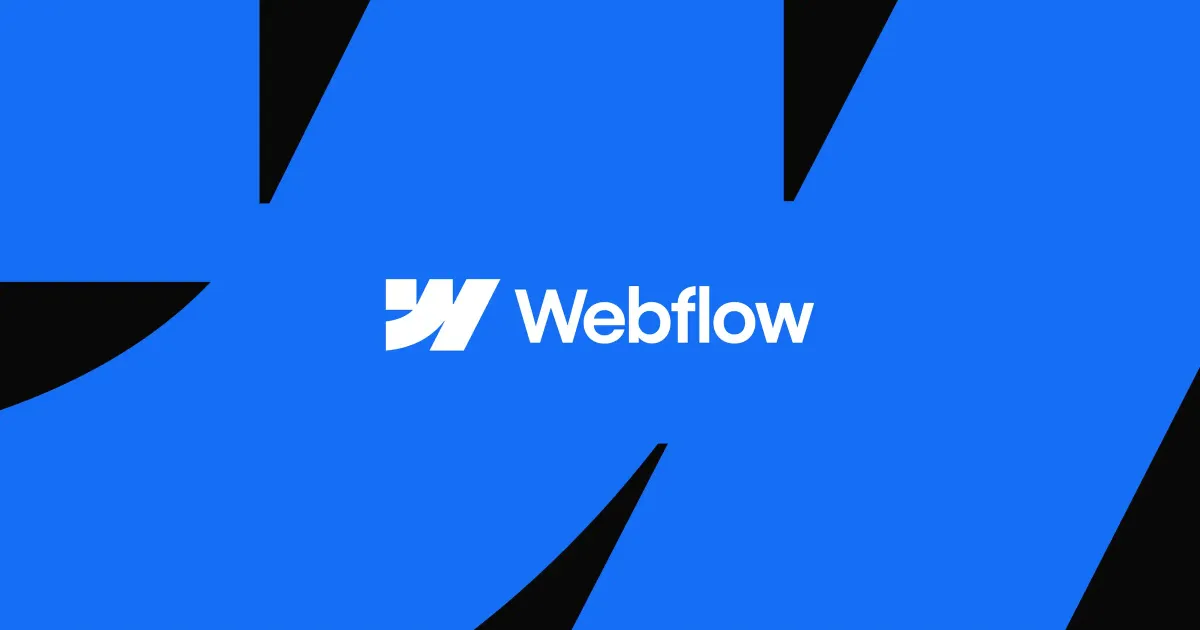Webflow Review (2025): The Visual Powerhouse That Bridges Design & Development?
Honest Webflow review 2025: Explore features, pricing, and real user experiences. Discover if this visual web design tool fits your needs

We’ve all seen website builders that promise simplicity but deliver cookie-cutter results. Then there are heavyweight frameworks that demand coding steepness. Webflow sits somewhere in between — a visual-first platform that still gives you serious control. But in 2025, does Webflow live up to that promise? In this review, I’ll break down what Webflow does, who should use it, where it shines, where it struggles, and how to get started.
What Is Webflow?
Webflow is a visual web design and hosting platform that allows designers (and non-coders) to build responsive, production-quality websites without needing to write code — while still granting access to underlying HTML, CSS, and JavaScript when needed.
Instead of using templates that you simply drag and drop, Webflow gives you a visual canvas where every element, style, and interaction can be designed and adjusted — and it generates clean code in the background.
The platform also includes a CMS, eCommerce capabilities, hosting, and more — making it more than just a page builder.
👉 Curious to see Webflow in action? Try it here.
⚡ Webflow’s Standout Features
Here are the features that make Webflow a compelling choice in 2025:
1️⃣ Pixel-perfect visual design + clean code
Webflow allows you to design with fine control — layout, positioning, typography, interactions — while producing clean, semantic code behind the scenes. This means you get both design freedom and technical soundness.
2️⃣ Built-in CMS & dynamic content
Webflow’s CMS (Collections) lets you define custom content types (e.g. blog posts, products, events) visually and bind them to templates. Recent improvements include ability to publish individual CMS items and draft modes.
3️⃣ Hosting, security & performance
Webflow includes hosting on a global CDN, automatic SSL, backups, DDoS protection, etc. Performance is often excellent due to static exporting and optimized delivery.
4️⃣ Interactions & animations
You can build scroll-based animations, hover effects, and custom interactions visually, without custom JavaScript. This gives Webflow an edge for design-forward, dynamic sites.
5️⃣ AI & advanced tools (emerging)
Webflow has been leaning into AI—adding AI assistants, generative content tools, and now exploring AI code generation (React components etc.) as part of its push into a broader visual dev environment.
✅ Pros and ❌ Cons of Webflow
👉Explore how Webflow can fit your needs? Try it here.
Who Should Use Webflow?
Great fit for:
- Designers who want to build full websites themselves without handing over to developers
- Agencies and freelancers building client sites that demand visual polish + flexibility
- Marketing teams who want a CMS-driven site where content editors can work safely without breaking layouts
- Brands or projects that care deeply about performance, interactions, and web standards
Maybe not ideal if:
- You are a total beginner with no sense of layout, CSS, or visual design
- Your project is a large-scale marketplace or needs complex backend logic or user systems
- You need a super low-cost option or have extremely limited budgets
- You want to host and fully migrate everything externally (though Webflow has export in some cases)
Webflow Pricing (2025 Plans)
Webflow’s pricing is layered and can be a bit complex, but here’s a simplified breakdown.
- Free / Starter: You can build and host a site on a webflow.io subdomain with limited features.
- Site plans: These remove Webflow branding, allow custom domain, add bandwidth, CMS item limits, etc.
- Workspace / Team / Enterprise: Adds collaboration, multiple users, more seats, audit logs, SSO, etc.
- Ecommerce plans: For stores, there are additional pricing tiers depending on features and sales volume.
As of 2025, Webflow’s pricing is seen by many as premium — costs can ramp up quickly for high-traffic sites or extensive stores.
👉 Even the free plan is a great starting point - check it out.
How Webflow Compares to Alternatives
In many reviews, Webflow is positioned as the “bridge between design and code” — more powerful than drag-and-drop builders, but less heavy than full dev frameworks.
Quick Summary of Webflow
❓ FAQs
Is Webflow secure? Yes — includes SSL, DDoS protection, role-based access, automated updates, etc.
Can I export my site? You can export static HTML/CSS/JS for many designs, but not always full dynamic or CMS parts.
Does Webflow work offline? No — it’s browser-based, and requires internet access.
Is Webflow good for eCommerce? It works well for simpler shops, but for advanced eCommerce (subscriptions, complex discounts, large catalogs), other platforms may be stronger.
Final Verdict: Is Webflow Worth It?
If you want to build a website that looks stunning, performs well, and gives you design-level flexibility without coding every detail — Webflow is one of the best options in 2025. It rewards users who are willing to learn and invest time, offering capabilities that surpass many drag-and-drop builders. For designers, agencies, marketing teams, and businesses, it strikes an appealing balance between visual power and technical integrity.
However, Webflow does come with tradeoffs: steeper learning curve, premium pricing, and some limitations in eCommerce or backend logic. It’s not a one-size-fits-all solution. But for people who care about both form and function, it’s absolutely worth evaluating.
👉 See what Webflow can do for you—get started now.

